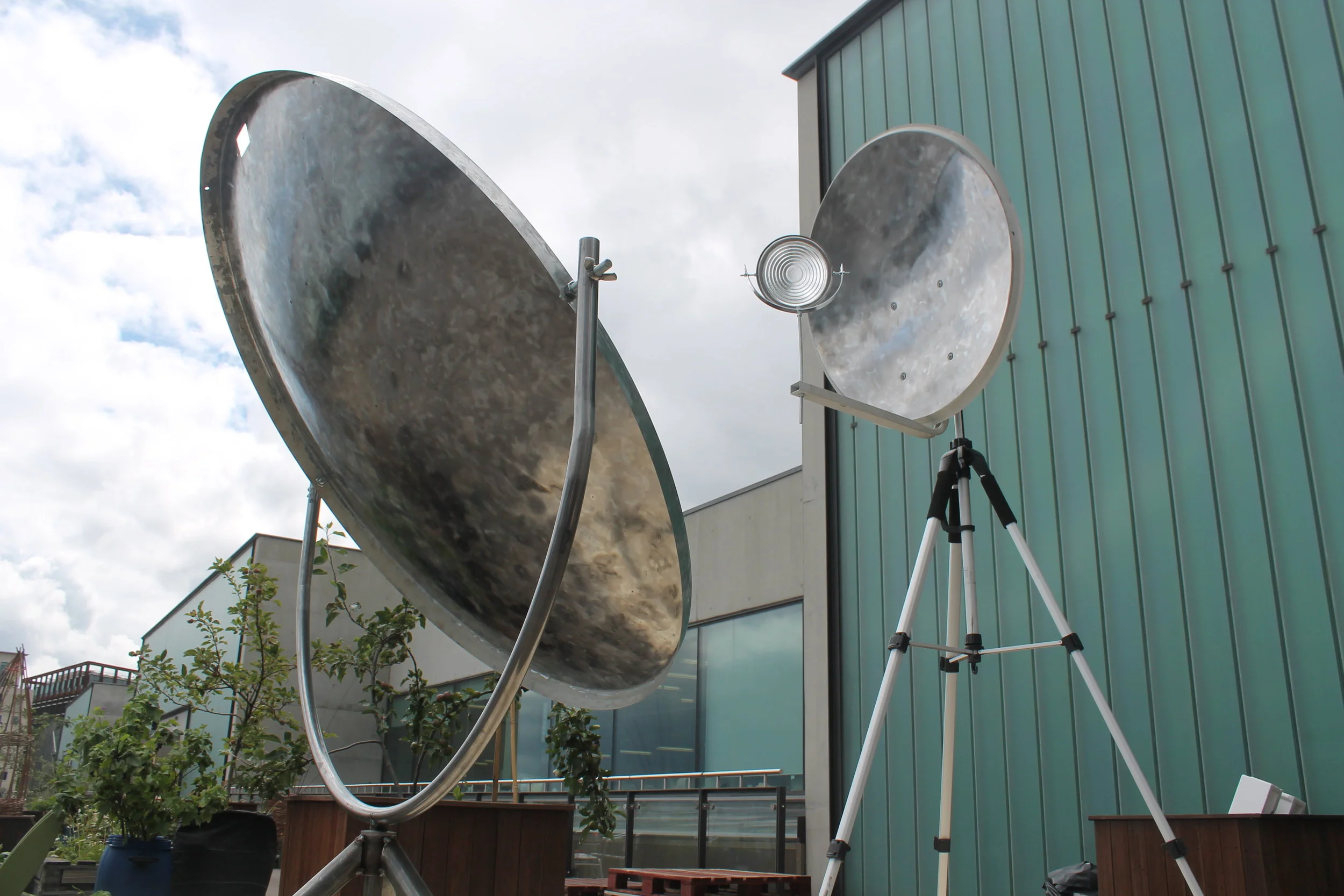
Transmitting Nature
The process of mining for technology minerals is hugely devastating to both people and planet. Many of us fail to understand how our digital technology works let alone understanding the process behind their creation. The system is vast and complex. It ranges from the artisnal miners in the south of the Democratic Republic of Congo to the queues of early adapters lining city streets for a chance to get the latest iPhone. As an individual designer, how am I to tackle such an entrenched system?
My solution was to imagine a counterfactual history, one in which we used our contemporary understanding of biology in order to redesign our technological path. I built two biological mechanisms that work in tandem with each other and some minor electrical components to form a biocomputer. This biocomputer creates binary code which can then be translated into words. The Earth’s first words.
Harnessing the power of sunlight.

Solar Furnace
As my entry for the Swarovski Conscious Design awards I built a Solar Furnace. My winning design is comprised of two parabolic mirrors and one Fresnel lens. Over 6000 reflective crystals cover the large dish to capture sunlight and funnel it into the smaller dish. The light is then reflected through the Fresnel lens, concentrating the light into a high temperature focal point.
The aspiration for this solar furnace is to use it as a net zero method of re-sintering crystal dust, a waste product of the crystal cutting process, into new circular crystals.
Travelling to the heart of the Pacific Garbage Patch.

North Pacific Gyre
Between the months of July and August, I joined a sailing expedition to cross the North Pacific Garbage Patch. We departed Ko Olina Marina, Hawaii, on the 22nd of July and spent 16 days at sea, arriving in Victoria on August 6th. During the voyage we passed through the garbage patch, measuring the amount of micro-plastic present on the surface and witnessing the impact of plastic on our Oceans first hand.
Creating a textile out
of plastic waste.

Polyhide
Polyhide is a material I developed whilst investigating ways to re-appropriate waste plastic. I focused my energy on plastic bags as they are used for a matter of minuets before being deemed useless and thrown away. The The Low Density Polyethylene (LDPE) that the bags are made from is not widely recycled in the UK, a fact most consumers are unaware of. They will throw the bags into their recycling bins, contaminating the load. By heat fusing layers of plastic bags together, I was able to create a material which is much more suitable to heavy ware, giving it the opportunity of a second life as an object of enhanced value. I began by making wallets and belts, before moving on larger objects such as the backpack. I also collaborated with London artist, Michael Wall, using the material to create large scale tapestries of his distinctive abstract forms.



